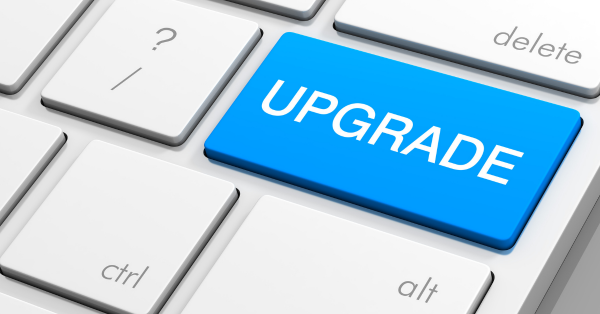With support solutions for the home and office, My Computer Works is here to help you get back to your life.
Do I need to upgrade to Windows 11?

Microsoft recently announced a number of major changes with the upcoming Windows 11 software upgrade later this year. You can expect an upgraded sleek design and improvements that promise to make your device more efficient, elevating your productivity. In his blog, Microsoft’s Chief Product Officer Panos Panay details the innovative development aims to “… build you a place that feels familiar, where you can create, learn, play and most importantly, connect in all new ways.”
Windows 11 is set to roll out during the holiday season and will continue into early 2022. Microsoft will also sell PCs with Windows 11 pre-installed around the same time. Microsoft unveiled a sneak peek of the Windows 11 operating system and we have you covered with what you need to know if you’re interested in upgrading your operating system.
Do I need to upgrade to Windows 11?
Technically, Microsoft won’t require you to upgrade your operating system to Windows 11, so it’s entirely up to you. If increasing productivity at home or for your employees in the office, then the upgrade may definitely be worth it. However, If you want to ride it out until developers work out any potential kinks, Microsoft will continue to support Windows 10 until October 14, 2025. The good news is that the upgrade won’t take any extra disk space than it does for Windows 10.
If you’re on the fence about upgrading, you can sign up for the Windows Insider Program to install preview builds of Windows 11. This will give you a chance to try out what’s new before the operating system is widely available.
New Changes with Windows 11
The most notable change with Windows 11 is the new design which looks drastically different from what you’re used to. The creators had simplicity, productivity and ease of use in mind when creating the new interface. Let’s look at some of the changes:
Start Button
The Start button is now at the center of the Taskbar instead of the left corner where it has always sat. This might take some getting used to. If you don’t like it, you can always go back and change it: Settings>Personalization>Taskbar.
Refreshed Start Menu
The Start menu now sits on the Taskbar, front and center, with a redesigned layout of apps and functions. This is a welcome and much cleaner look than in Windows 10 and it’s Microsoft’s way to make it easier to navigate apps so you can quickly get to what you need from your desktop.
Snap Tools
Tools like Snap layouts, Snap Groups and Desktops optimize the amount of screen real estate with a clean layout. You can create and customize separate desktops for different facets of life such as work, school and hobbies. The Snap Navigator menu drops down when you hover over the maximize button on an app’s window. This lets you snap an app to a predetermined set of grid layouts without needing to drag your window to the edge of your display.
Chat Friendly
Chat functions from Microsoft Teams are integrated into the taskbar. You can now connect with friends, family and coworkers through text, video and audio chat, share files, voice recordings or video on any device.
Upgraded Gaming Technology
If you’re a gamer, the Windows 11 upgrade substantially improves the PC gaming experience. Windows is incorporating DirectX 12 Ultimate high-tech graphics at super fast frame rates, Direct Storage for faster load times, and Auto HDR for a wider and more vivid range of vibrant colors.
Widgets
The new Widget panel showcases a feed so you can get news, info, weather, notifications and more on your desktop. The Widget uses Artificial Intelligence (AI) powered technology to curate personalized content curated to your interests that slides in without taking extra space on the desktop.
Microsoft Store
The new Microsoft store is adding more apps, games, shows and movies for work and play, including new Android apps coming to Windows for the first time. Some of the new apps already appear in the Microsoft Store such as Zoom, Canva, WinZip and Acrobat Reader.
How do I know if my computer is compatible with Windows 11?
Luckily, upgrading to Windows 11 is free for users that already use Windows 10. If your existing PC is running the most current version of Windows 10 and meets the minimum hardware specifications, your device should have no problem upgrading to Windows 11. If you bought your laptop within the last four years, you should be fine. By default, all your files and data will transfer. However, we recommend backing up your files before installing the upgrade just in case.
If you haven’t downloaded Windows 10 yet, now is a good time to upgrade to prepare your device for the 11 upgrade when it comes out. Of course, whatever you decide, our expert pros at My Computer Works are here to help you.

